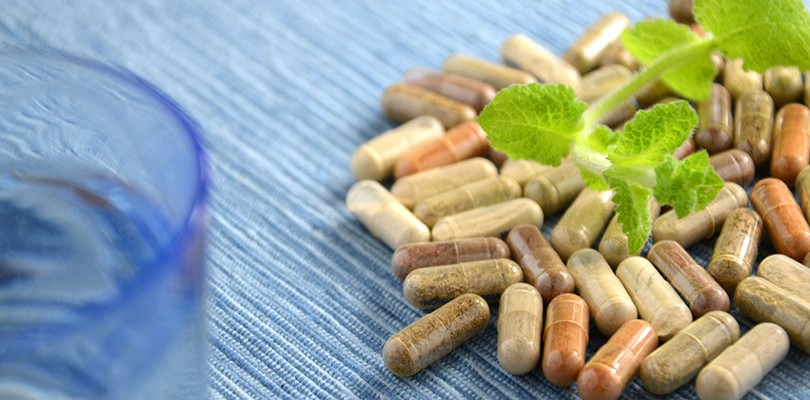
Photo Credit: Tamara Dragovic / istockphoto.com
Managing Arthritis Pain
Just because you have arthritis, it doesn’t mean you have no control over pain and debility. There are many steps you can take to prevent and relieve discomfort.
Let’s take a look at some of the most effective tools you can use to enhance your comfort level, improve your mobility, maintain your independence, and improve your quality of life.
1. Begin and Stick with an Exercise Program
Exercise is a known pain and stress reliever, and can do wonders for you when suffering from arthritis pain. If you are overweight, engaging in an exercise program will help you to take off excess pounds that put stress on your joints.
Regular exercise can also improve your flexibility and strengthen your muscles and joints, which as a result can relieve joint pain. As an added bonus, when you exercise your body releases endorphins, a hormone that acts as a pain reliever.
Along with the physical benefits, regular exercise will give you more energy during the day, as well as help you sleep better at night. Feeling relaxed and getting enough sleep has a direct impact on how much discomfort you experience with arthritis pain.
Check with your health care provider before starting an exercise program.
Tips for Exercising with Arthritis
- Select an activity that interests you. Swimming, yoga, walking and isometric exercises are excellent options. Avoid activities that jar your joints.
- Set achievable goals.
- Warm up and cool down before and after each session.
- If you experience pain, back off on the activity. Do not press through it.
- Apply hot or cold packs to relieve muscle and joint soreness after exercising.
- Include activities that enhance your flexibility.
- Begin slowly. It will not take long for you to begin to experience rewards of your efforts.
- Consider getting a massage after your workout as a reward.
- Apply diluted essential oils to your joints before exercising. They can help to warm your joints, reduce inflammation and lower levels of discomfort.

Photo Credit: margouillatphotos / istockphoto.com
2. Eat Well, Feel Better
Diet plays a big part in pain relief. To help combat your joint pain, try an alkalizing diet that contains adequate amounts of protein, calcium and other nutrients.
Obtain most of your protein from vegetable sources, including dried legumes, whole grains and dark green leafy vegetables. Animal-based foods make your body more acidic, which can result in the leaching of calcium from your bones and cause pain.
Include foods that contain ample sources of omega-3 fatty acids, such as flax and hemp seeds, to prevent inflammation. Salmon, herring, mackerel and bluefish also contain high levels of healthy fatty acids.
Follow a calorie-restricted diet if you need to lose weight. Bake, roast, braise or broil foods so you limit your use of cooking oils, which can increase inflammation and pain.
Include plenty of berries and cherries in your diet. This is particularly important if you suffer from gout. Cherries, cherry juice and strawberries are the most important foods you can consume to reduce pain caused by gout.
Drink lots of fluids as this will keep your joints hydrated and flexible. Limit your intake of alcohol and carbonated beverages as they may worsen pain.

Photo Credit: endopack / istockphoto.com
3. Manage and Reduce Stress
It’s important to take steps to reduce stress in your life for a multitude of reasons, but especially if you’re trying to ease your arthritis pain. Stress causes muscles to tense up, which makes them more susceptible to pain. Luckily, there are many things you can do to help minimize stress in your life.
Maintaining a healthy spiritual life can be helpful to stay stress-free. What that means differs from person to person; while some find that focusing on an organized religion supports their spirituality, there are other ways to nurture your spirit.
Take a walk on the beach, enroll in a painting class or learn to fly fish. Relieve stress by engaging in physical activity, preferably outdoors. These are just a few of the countless activities that will nourish your spirit and relieve stress.
Spend time with people who nurture you. Take a close look at your day-to-day life. Do you need to make changes in your work, home or relationships?
Take good care of your mental health. Multiple studies indicate that people who face emotional challenges, such as depression, experience more pain than people who are not depressed.
Increased pain due to stress is not all in your head — your brain and body chemistry changes when you are stressed, resulting in increased discomfort. Be proactive. Prevent and reduce your stressors and pain.
Botox injections for arthritis are an FDA approved treatment option to help prevent arthritic pain. Learn more to find out if it's the right option for you.

Photo Credit: marekuliasz / istockphoto.com
4. Practice Gratitude
When you live with a chronic condition it is easy to become isolated or feel sorry for yourself. Acknowledge your feelings and move on.
Pay attention to the moments in your life. Listen to the sound of a bird or watch the sun rise. Consider volunteering for a cause that is important to you.
By looking outside of yourself and helping other people, animals or the earth, you will gain an appreciation for your life and your pain may diminish.

Photo Credit: darios44 / istockphoto.com
5. Employ the Use of Natural Remedies and Pharmaceuticals
While pharmaceuticals should never be the primary tool you use to manage pain, do not hesitate to take advantage of the many remedies available for pain relief.
Essential oils may be applied topically to joints for rapid relief of pain and inflammation. Soaking in a hot bath containing Epsom salts can effective relieve pain and stress.
Herbal remedies, such a devil’s claw, yucca, willow bark and turmeric have been used for centuries as effective pain relievers. Over-the-counter aids, including menthol rubs and hot packs, are effective. Prescription medications can also be used to maintain joint health and relieve inflammation.
While many people shy away from taking pharmaceuticals, judicious use of supplements and medications may not only reduce pain, but can also help you remain active and independent. Many over-the-counter, natural and pharmaceutical remedies work by reducing inflammation. Keeping inflammation at bay protects your joints from further damage while enhancing your level of comfort.
Check with your health care provider for advice. Only use medications and supplements as prescribed.

Photo Credit: chinaview / istockphoto.com
6. Explore All of Your Options
There is a vast array of mainstream and conventional therapies available to relieve discomfort due to arthritic pain. Laser therapies, injections, ozone treatments and osteopathic manipulation are just a few of the many options which are available for you.
Other therapies that have been shown to relieve suffering include prolotherapy, homeopathic treatments and manipulative procedures such as myofascial release. Practitioners of Ayurvedic and traditional Chinese medicine offer whole body approaches for addressing the pain and other symptoms that occur when arthritis is present.
No one method works all of the time for every person. Work with your health care provider or team to create a wellness plan that not only relieves your pain, but maintains the health of your joints and general level of wellbeing. You can live a comfortable, enjoyable, full life despite your arthritis diagnosis.
Do you know what the connection is between rheumatoid arthritis and your platelet count? Read on to learn about the correlation.








